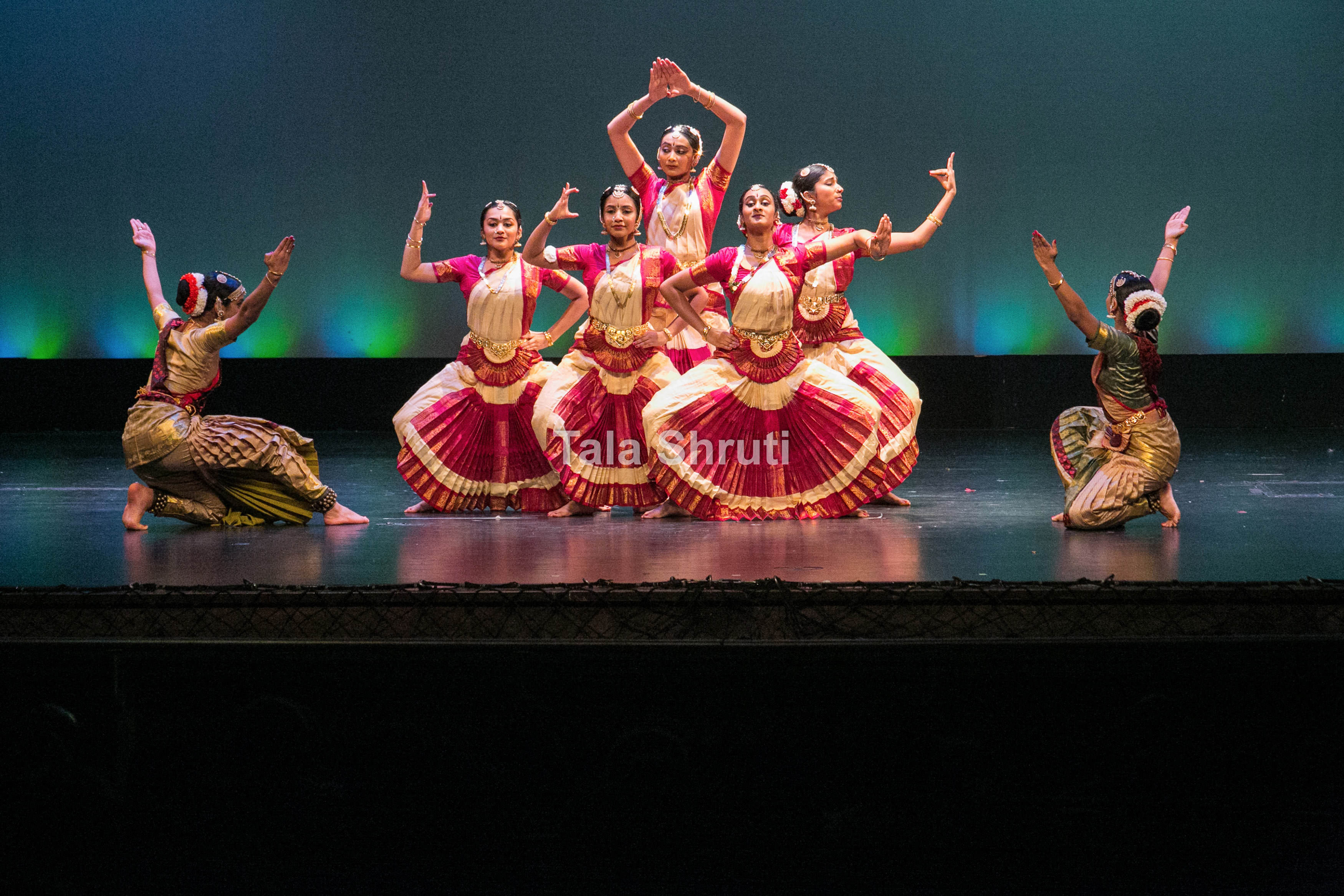The Tradition of Bharatanatyam Continues in the New World
Though the reasons that propel parent and student generations are not the same.
by Renuka Srinivasan
n recent years, there has been an exponential growth of Bharatanatyam in the US.
When I came to the US in 1988, to Delaware specifically, the number of sishyas and gurus were few and far between in the whole country. Today, though, there are many teachers in many parts of the country and many, many students who are enrolling, with a sizable percentage of them continuing on to complete a whole margam and have an arangetram.
The growth has definitely been facilitated by the increase in population of Indian-Americans in the US. Additionally, since we have a larger group of immigrants, we feel secure to demonstrate our inherent and unique cultural strengths without having to feel out of place. The act of enrollment of a sishya in a Bharatanatyam academy is a collective decision between parent and child. However, the reasons for enrolling are vastly different for the two generations.
Parents hope there will be a cultural immersion that is otherwise not as easily available; unlike in India, where even through osmosis one becomes familiar with the culture and its nuances. Bharatanatyam classes provide an opportunity for their children to meet others who are of the same ilk and learn from each other about the unique, bicultural experiences that are so common among immigrant families. This is something that they cannot pick up from their regular school. Secondly, by virtue of learning the basics first, and thereafter individual dance items, their children start learning a little more about the spiritual facet of their culture – hereby giving a whole new meaning to their temple visits. For example, the Andaal vigraham at a temple has a whole new meaning after you have learned Andaal Gouthavam.
The Andaal vigraham at a temple has a whole new meaning after you have learned Andaal Gouthavam.
The girls though, don’t necessarily get into this with a conscious choice to learn about their culture. What is a five-year-old girl to know about that aspect of life? For her, it is the excitement of starting something new and making new friends. Learning Bharatanatyam happens to be a great byproduct, at least initially. As they evolve into dancers, they start appreciating the discipline, continuous practice and the positive impact it brings to other areas of their lives. Arangetram of other students that they watch, provide them with a trangible goal for their aspiration. Many of the graduate students of my school, Tala Shruti, aver that their inspiration to persevere was a senior graduate’s arangetram. So, as parents make conscious decisions to use Bharatanatyam training for cultural transmission, the students have their own reasons that keep metamorphosing as they make the journey from a wide-eyed, five-year-old girl learning hastas and mudras, to a graceful dancer who ascends the stage with ease, confidence and a cultural comfort.
(Renuka Srinivasan is the Founder and Artistic Director of Tala Shruti School Of Dance.)

